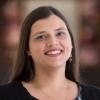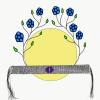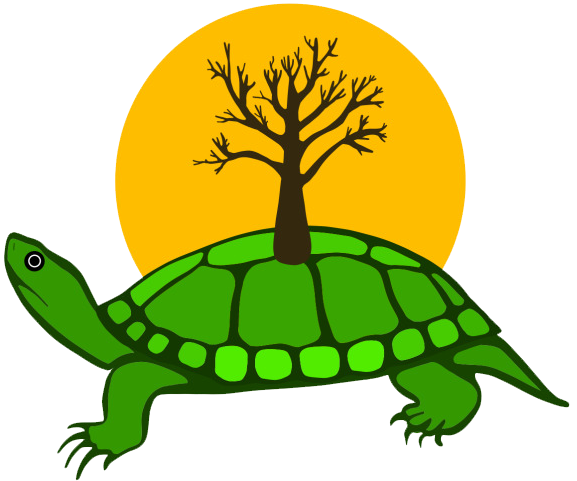Indigenous Research
Empowerment through revitalization of Indigenous language and education
November 25, 2019
Share

Credit: Chief Lady Bird
Lindsay Morcom thinks of the various aspects of her research as being like three strands of sweet grass braided together. “They’re three different streams, but closely connected,” she says, explaining that each explores an aspect of Indigenized education and reconciliation. “We can’t have one without the other.”
Since joining the Faculty of Education as an assistant professor in 2013, Dr. Morcom, who is also the coordinator of the Indigenous Teacher Education program (ITEP) at Queen’s and a Canada Research Chair in Language Revitalization and Decolonizing Education, has focused her attention on the revitalization of Indigenous language and culture.

Credit: Chief Lady Bird
The first strand: Language revitalization through immersion education
As a linguist and educator who also identifies as Anishinaabe, Dr. Morcom is interested in the role native language plays in building self-esteem and improving graduation outcomes for Indigenous children.
She is currently working in partnership with an Anishinabek immersion school on Manitoulin Island, Lakeview School at M’Chigeeng First Nation, on a program called the Ngwaaganak Immersion Program helping to track the academic, linguistic, and personal development of children being educated in their Indigenous language.
“Research shows that children who speak their heritage language also have higher graduation rates,” she says, explaining that the immersion program is based in a community where the Indigenous language is considered to be endangered. That’s why the United Chiefs and Council of Mnidoo Mnising produced a declaration, as part of a larger self-governance and self-determination policy, that by 2030 all of their community services would be available in Anishinabemowin (the language of the Anishinaabe people), which also requires that children have the opportunity to learn it fluently.
Dr. Morcom, who is taking a community-based, collaborative approach to her research, is not only tracking cognitive development and school skills among students in the early immersion program, but also looking at their self-esteem and pride at being Anishinaabe people. “We want to make sure that these children are learning the language – that’s of the utmost importance – but also that they will be able to engage academically on any path that they want,” she says.
"To do Indigenous research well, regardless of your heritage, you should never go in and tell the community what to do. Instead, you go in and you listen, and then you ask them what they want."
– Dr. Lindsay Morcom
Canada Research Chair in Language Revitalization and Decolonizing Education


Credit: Chief Lady Bird

Credit: Chief Lady Bird
The second strand: Revitalizing Indigenous languages in Kingston
Dr. Morcom is also committed to the development of Indigenous language in her own community. She is an active participant in the Kingston Indigenous Language Nest (KILN). KILN offers many programs, including bi-weekly language learning opportunities for families, free, community-based language classes for teens and adults, and language resources that are produced in partnership with other organizations, like Loving Spoonful and Community Story Strategies, as well as in-school language opportunities in partnership with school boards. The group focuses on Anishinaabemowin (the language of the Anishinaabe people) and Mohawk, the languages of this territory. “We have always shared this territory, so we go back and forth between the two languages,” says Dr. Morcom, explaining that meetings also honour the Dish with One Spoon treaty by building an inclusive community from different Indigenous Nations.
As part of her research, Dr. Morcom helps to plan the language learning opportunities, which attract everyone from Elders in the community to children and are built using a non-hierarchical model, typical in Indigenous communities. Dr. Morcom says KILN events have become more than just a tool for learning languages: they are a place for Kingstonians to develop pride in their heritage and each other. “The Kingston Indigenous Language Nest is inclusive of people at all language levels and from all walks of life,” she says. “That’s the real benefit of it.”

Credit: Chief Lady Bird
The third strand: Championing Indigenized and reconciliatory education
For Dr. Morcom, reconciliatory education means finding ways to create “meaningful ally-ships” between Indigenous and non-Indigenous populations, especially within the academic community. “If we want things to improve in Canada, we have to question colonization and we have to look at how we can collaborate with settler communities in order to work towards reconciliation,” she explains. “That is the issue. Language loss is still happening. Schools are still underfunded. Treaties are not honoured. Colonization is still happening.”
Dr. Morcom is part of a collaborative research group made up of Indigenous and non-Indigenous female researchers at universities across Canada who have looked at decolonizing and reconciliatory behaviour at various academic institutions, among other topics. As well as leading a well-received session on issues of reconciliation at the 2017 Congress of the Humanities and Social Sciences, the group co-edited an issue of the Canadian Journal of Native Education and will continue to co-author papers. They are currently collaborating on additional publications and conferences.
“The research I do is so collaborative, but that’s how it should be in Native education,” says Dr. Morcom, “because if you are doing it by yourself in a corner, then you are not reflecting community.”
Why is it important to revitalize Indigenous languages?
For Dr. Morcom, revitalizing Indigenous language is critical to understanding the way a culture works. “Language gives us a unique way of expressing things,” she says, explaining that many words do not translate easily into English. “Given that a language develops in a specific territory, if it is lost we also lose the depth of the intellectual and linguistic traditions that it is tied to.”
Is Canada at risk of losing its Indigenous languages?
Of Canada’s approximately 60 Indigenous languages, all but six are in imminent danger of extinction if we don’t do something to revitalize and to propagate them. View an interactive world map.
Indigenous language and self-esteem in children
Statistics indicate that Indigenous children have lower high school graduation rates than their non-Indigenous peers, in part because their ways of knowing are at odds with the ways the mainstream education system expects them to learn. A child who is brought up in an Indigenous household may struggle when interacting with teachers, who may have a different way of interacting or conveying expectations, for the first time. “A five-year-old has no way of knowing that he or she is coming from a different cultural paradigm,” Dr. Morcom explains. “Instead, they will just assume they are stupid.” By contrast, educating children in a way that acknowledges and builds on their cultural heritage and allows them to learn in their native language, can make children more effective learners. “Having education that is delivered in a culturally relevant way actually boosts self-esteem,” says Dr. Morcom, “because what they are learning matters to them.”
The Dish with One Spoon Treaty
The Dish with One Spoon treaty is a treaty between the Anishinaabe and Haudenosaunee peoples. Long before contact with European settlers, these groups had frequently lived in conflict due to their different approaches to living on the land. They eventually developed a treaty binding them to share territory and protect the land. “The Dish with One Spoon treaty honours everyone’s right to be on the territory, and nobody’s right to take too much,” says Dr. Morcom.
The Indigenous Teacher Education Program at Queen’s
The Indigenous Teacher Education Program (ITEP) provides a unique opportunity for teacher candidates – particularly those with Indigenous heritage – to specialize in Indigenous education. The program offers courses on topics from Indigenous perspectives to Indigenous-specific and student–centered learning, and gives students access to an Elder-in-Residence. ITEP is offered on campus as well as on reserve through our Manitoulin-North Shore community-based program. As one of the first such programs in Ontario, it now boasts more than 400 alumni working as teachers and administrators with school boards across Canada, as well as in museums and with governments.
Acknowledging traditional lands at Queen’s
People at Queen’s acknowledge the fact that the university is situated on traditional Anishinaabe and Haudenosaunee territory. In doing so, they are recognizing the people who lived on the land before the arrival of European settlers. They are also acknowledging the territory’s significance for the Indigenous people who lived on it, as well as for those who continue to live on it, whose practices and spiritualties were and remain tied to the land.
Indigenous language resources at Queen's
Queen's University Library, working with the Kingston Indigenous Languages Nest, support the Indigenous Language Revitalization and Primary Junior Indigenous Education research guides.
Illustrator: Chief Lady Bird

Nancy King is a First Nations (Potawatomi and Chippewa) artist from Rama First Nation. Her Anishinaabe name is Ogimaakwebnes, which means Chief Lady Bird. She has completed her BFA in drawing and painting with a minor in Indigenous visual culture at OCAD University and has been exhibiting her work since she was 14 years old. Through her art practice, she strives to look to the past to help her navigate her Anishinaabe identity whilst living in an urban space as well as advocate for Indigenous representation as an integral aspect of Canada’s national identity.
In 2018, Chief Lady Bird was commissioned by Twitter to design an emoji, “Turtle Island” for National Indigenous Month (June).



